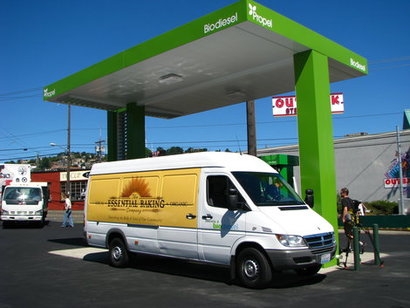
The process converts biogenic urban resources into liquid drop-in fuels and so it is ably positioned to support Europe’s 2030 goals for renewable energy and the circular bio-based economy.
On the 28th of January, premium experts from research organisations, technology developers and end users, discussed the latest scientific advancements in this area, state of the art of the technology scale up, as well as the policy outlook and the market uptake of HTL, at the conference “Hydrothermal Liquefaction (HTL) in the Green Energy Transition”, organised by the NextGenRoadFuels project.
The new legislative framework arising from the EU Green Deal to deliver on the EY’s increased climate ambition are setting the playground for biofuels and the HTL technology to become central players in the green energy transition.
The workshop started by highlighting the European Union ambition to become a climate neutral continent aiming at a cut in GHG emissions by 55 percent by 2050. The availability of advanced biofuels is attractive not only for the transportation sector, marine and aviation in particular, but the availability of bio crude is also crucial for greening the petro-chemical industry, especially taking into account the attention that the EU is placing on plastic recycling and circular economy.
Due to its versatility, HTL is not only perceived as the ‘killer app’ in the petroleum business but is also recognised and accepted by the general public.
A review of the ongoing Horizon 2020 projects highlighted different approaches on HTL development and revealed that multiple types of feedstock are being researched and tested. The flexibility in using different types of feedstocks beside lignocellulosic biomass, including waste such as sewage sludge, is indeed one of the pros of HTL, enabling the implementation of circular economy projects in urban realities alongside the forestry industry, widening the potential for the technology to be integrated in multiple different projects.
In the last months, NextGenRoadFuels achieved the production of 100kg of high-quality bio crude from bio waste, mostly sewage sludge. The protein and phosphorous recovery from sludge are being developed as byproduct in order to provide additional value to the industry.
Another significant milestone is also the 2000 hours of continuous catalytic upgrading from bio crude into biodiesel endured by the Pacific Northwest National Laboratory (PNNL). These two achievements demonstrate that technology development is progressing fast towards the commercialisation of HTL. Yet, the deployment of large-scale demo pilots is necessary to achieve the significant steps for improving the output quality and to bring the market actors on board. Even though a reliable business case is no in place yet. The technology is showing matureness in terms of its capabilities in providing premium bio crude and its dependency on feedstock price is decreasing.
The first analysis on go-to-market possibilities showed that the timeframe for the introduction of the technology to the market is shortening as more interest and leverage from the stakeholders of the full value chain is increasing. The need of demos is required to prove competitiveness of HTL in comparison to other established technologies such as anaerobic digestion. The wastewater treatment industry is evaluating the very high potential of HTL, thanks to its process design, can be fed with multiple wet streams. The marine industry sees in HTL a breakthrough to meet sustainability, scalability, and affordability goals in transportation fuel and confirmed its readiness to test the product once consistent quality is ensured.
The refineries viewpoint underlined the requirement of an often-underestimated aspect: handling and storage. In fact, to be effective on a large scale these two aspects need to be addressed, as acquainting with the specifics of new feedstocks is a lengthy procedure. Moreover, also consistency in volumes is to be reached for a complete evaluation. Even though HTL can be integrated in the refinery sector through different routes, such as centralised and decentralised paths and regional settings, cross sectorial cooperation is crucial in order to include the entire value chain.
The recording of the conference together with the presentation slides can be found here.
For additional information:

